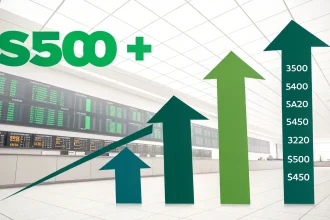As the Federal Reserve considers potential interest rate cuts, investors and savers should prepare for varying impacts across different financial products. The sensitivity to rate changes differs significantly among common savings and investment vehicles, creating both challenges and opportunities for consumers managing their finances.
How Rate Cuts Affect Cash Accounts
Cash accounts, including checking and money market accounts, typically respond quickly to Federal Reserve rate adjustments. When the Fed lowers rates, financial institutions often reduce the interest paid on these accounts within days or weeks.
For consumers who rely on cash accounts for emergency funds or short-term savings, this means diminishing returns on their balances. Many banks that increased their yields during the rate-hiking cycle will likely reverse course as rates fall, potentially returning to the near-zero interest environment seen in previous years.
Certificate of Deposit Response Patterns
Certificates of Deposit (CDs) react differently to rate cuts based on their term length. New CD offerings will reflect lower rates almost immediately after Fed announcements, while existing CDs maintain their locked-in rates until maturity.
This creates a strategic consideration for savers: securing longer-term CDs before rate cuts take effect can lock in higher yields for extended periods. Many financial advisors suggest a CD ladder strategy—spreading investments across various maturity dates—to balance access to funds with rate protection.
Treasury Securities in a Falling Rate Environment
Treasury securities, backed by the U.S. government, show a more complex response to rate cuts. When rates fall, the market value of existing Treasury bonds typically increases, creating potential capital gains for holders who sell before maturity.
However, new Treasury purchases will offer progressively lower yields as rates decline. The Treasury market often anticipates Fed moves, meaning yields may decrease even before official rate cuts are announced.
For investors focused on income, this presents a dilemma: lock in current rates for longer terms or accept lower yields with shorter-term securities that maintain greater flexibility.
Savings Account Yield Changes
Traditional savings accounts and high-yield savings accounts (HYSAs) generally follow Federal Reserve rate movements, though not always immediately or proportionally. Online banks and financial technology companies, which have offered competitive rates to attract deposits, may resist lowering their yields initially to maintain their customer base.
However, as rate cuts continue, even these institutions will eventually reduce their offerings. Consumers should expect:
- Traditional brick-and-mortar banks to lower rates quickly
- Online banks to adjust more gradually
- The spread between highest and lowest available rates to narrow
The timing of rate adjustments varies significantly across financial institutions, creating temporary opportunities for savers who actively monitor and switch between products.
For those planning their financial strategies, understanding these different response patterns is crucial. Rate-sensitive products like money market accounts and variable-rate CDs will see immediate yield reductions, while fixed-rate products provide temporary shelter from declining rates.
Financial experts recommend reviewing all savings and investment holdings when rate cuts begin, as the relative attractiveness of different products shifts with the interest rate environment. Products that performed well during rising rates may underperform as rates fall, necessitating portfolio adjustments.
As the economic cycle progresses, these rate sensitivities will continue to influence the optimal mix of savings and investment vehicles for consumers seeking to maximize returns while maintaining appropriate liquidity and risk levels.









